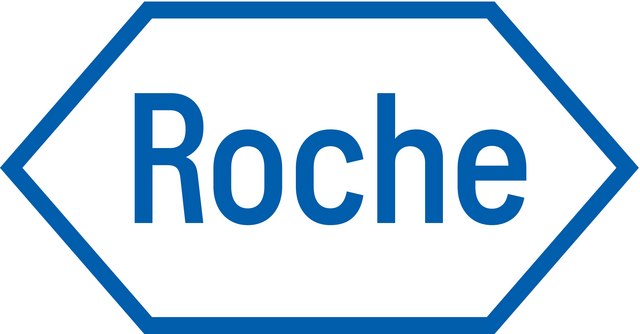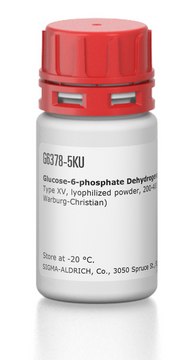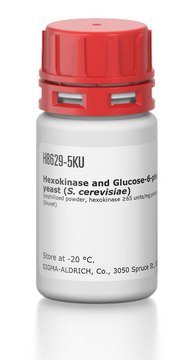H4502
Hexokinase from Saccharomyces cerevisiae
Type F-300, lyophilized powder, ≥130 units/mg protein (biuret)
Synonyme(s) :
Hexokinase D, Hexokinasetype IV, ATP:D-Hexose-6-phosphotransferase, Hexokinase from yeast
About This Item
Produits recommandés
Source biologique
Saccharomyces cerevisiae
Niveau de qualité
Type
Type F-300
Forme
lyophilized powder
Activité spécifique
≥130 units/mg protein (biuret)
Poids mol.
110 kDa
Produit purifié par
crystallization
Conditions de stockage
(Keep container tightly closed in a dry and well-ventilated place)
Couleur
white
Traces d'anions
sulfate (SO42-): free
Activité étrangère
ATPase, myokinase, glucose-6-phosphate dehydrogenase, 6-phosphogluconic dehydrogenase and phosphoglucose isomerase ≤0.01%
Température de stockage
−20°C
Informations sur le gène
bakers yeast ... HXK1(850614), HXK2(852639)
Vous recherchez des produits similaires ? Visite Guide de comparaison des produits
Description générale
The hexokinase 1 (HXK1) gene is mapped to the Saccharomyces cerevisiae chromosome VI. HXK1 is ubiquitously expressed in mammalian tissues and is abundant in the brain, erythrocytes, lymphocytes, and fibroblasts.
Application
- for digesting glucose for measuring glucose content in the root and stem samples of Quercus velutina
- to treat ADP (adenosine diphosphate) solution along with D-glucose to remove the contaminating ATP (adenosine triphosphate)
- in 4-(2-hydroxyethyl)-1-piperazineethanesulfonic acid buffer (pH 7.5) for ADP-[13CU]glucose synthesis
Actions biochimiques/physiologiques
The rate of phosphorylation varies with different hexoses (pH 7.5, 30 °C).
D-fructose KM: 0.33 mM
D-glucose KM: 0.12 mM
D-mannose KM: 0.05 mM
Yeast hexokinase exists as two similar isoforms, PI and PII (A and B), with isoelectric points of 5.25 and 4, respectively.
Molecular Weight: ~ 54 kDa (monomer)
~110 kDa (dimer)
Optimal pH: 7.5 to 9.0
Extinction Coefficient: E1% = 8.85 (PI) and 9.47 (PII) at 280 nm
Activators: Hexokinase requires Mg2+ ions (KM = 2.6 mM) for activity. Hexokinase is activated by catecholamines and related compounds.
Inhibitors: sorbose-1-phosphate, polyphosphates, 6-deoxy-6-fluoroglucose, 2-C-hydroxy-methylglucose, xylose, lyxose, and thiol reactive compounds (Hg2+ and 4-chloromercuribenzoate)
Qualité
Définition de l'unité
Forme physique
Reconstitution
Produit(s) apparenté(s)
Code de la classe de stockage
11 - Combustible Solids
Classe de danger pour l'eau (WGK)
WGK 3
Point d'éclair (°F)
Not applicable
Point d'éclair (°C)
Not applicable
Équipement de protection individuelle
Eyeshields, Gloves, type N95 (US)
Faites votre choix parmi les versions les plus récentes :
Déjà en possession de ce produit ?
Retrouvez la documentation relative aux produits que vous avez récemment achetés dans la Bibliothèque de documents.
Les clients ont également consulté
Notre équipe de scientifiques dispose d'une expérience dans tous les secteurs de la recherche, notamment en sciences de la vie, science des matériaux, synthèse chimique, chromatographie, analyse et dans de nombreux autres domaines..
Contacter notre Service technique







